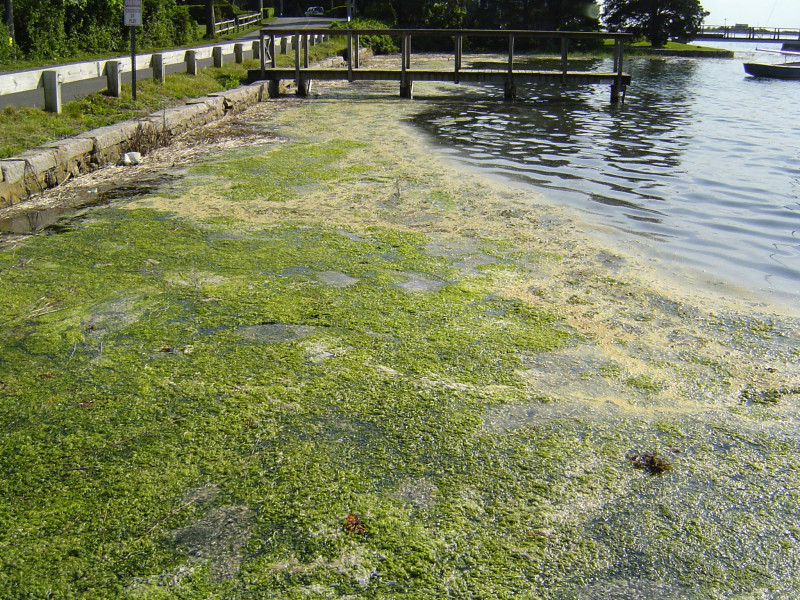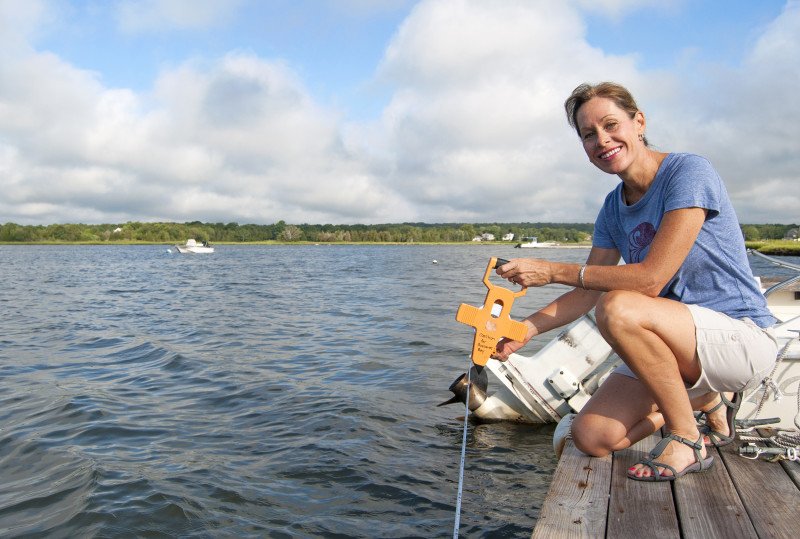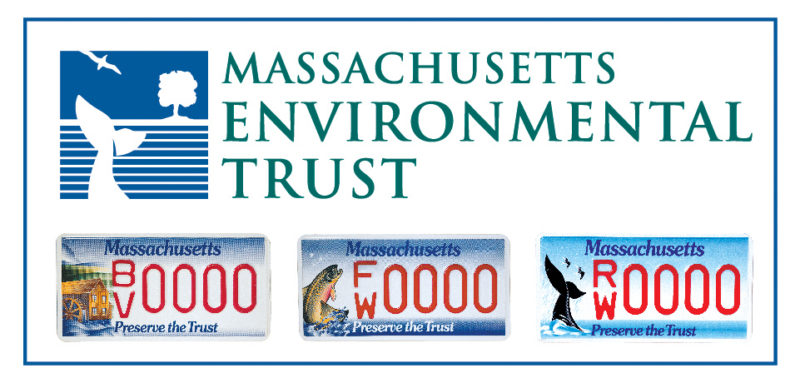What does the Bay Health Index measure?
The Buzzards Bay Coalition scores the health of local waterways between 0 and 100. A Bay Health score of 100 represents pristine water and 0 represents water severely polluted with nitrogen. (The score does not measure bacteria, and does not indicate swimmability or shellfish bed status.)
The Bay Health Index is the sum of five health indicators: nitrogen (organic and inorganic), dissolved oxygen, algal pigments, and water clarity. Data are combined and reported as a single score that provides a snapshot of a waterway’s health. (Note: The Bay Health Index does not include bacteria and is not an index of swimmability or shellfish bed status.)
Nitrogen

Nitrogen pollution fuels the growth of algae, like this algae bloom in West Falmouth Harbor.
Nitrogen is a type of nutrient that controls plant production in Buzzards Bay. Some nitrogen is an essential part of any waterway. But when there’s too much nitrogen in the water, it can become pollution.
The Coalition monitors two forms of nitrogen in Buzzards Bay: inorganic and organic. Tracking both forms of nitrogen helps to identify their source and potential impact on our water. Our nitrogen monitoring is conducted with the Marine Biological Laboratory in Woods Hole.
Dissolved Oxygen
Dissolved oxygen is the amount of oxygen in the water. Just like you and me, fish, shellfish, and plants all need oxygen to survive.
Dissolved oxygen is an important factor for determining a waterway’s health. When oxygen levels are low, it’s an indication that there is too much nitrogen pollution in the water.
Algal Pigments
Chlorophyll a is a green plant pigment found in algae and most phytoplankton. Plants use chlorophyll a during photosynthesis.
Measuring chlorophyll a and its immediate breakdown product, pheophytin a, indicates the amount of algae in the water. High chlorophyll levels are often a sign of nitrogen pollution.
Water Clarity

Volunteer Baywatchers use a Secchi disk attached to a measuring tape to record water clarity.
Water clarity is affected by the amount of algae and sediment particles suspended in the water. Good water clarity is vital to the health of a waterway. When the water is too cloudy, sunlight can’t reach eelgrass growing at the bottom.
Water clarity is measured using a Secchi disk: a black-and-white circle attached to a measuring tape. The disk is lowered into the water until it’s no longer visible. This depth is known as the “Secchi depth.”
